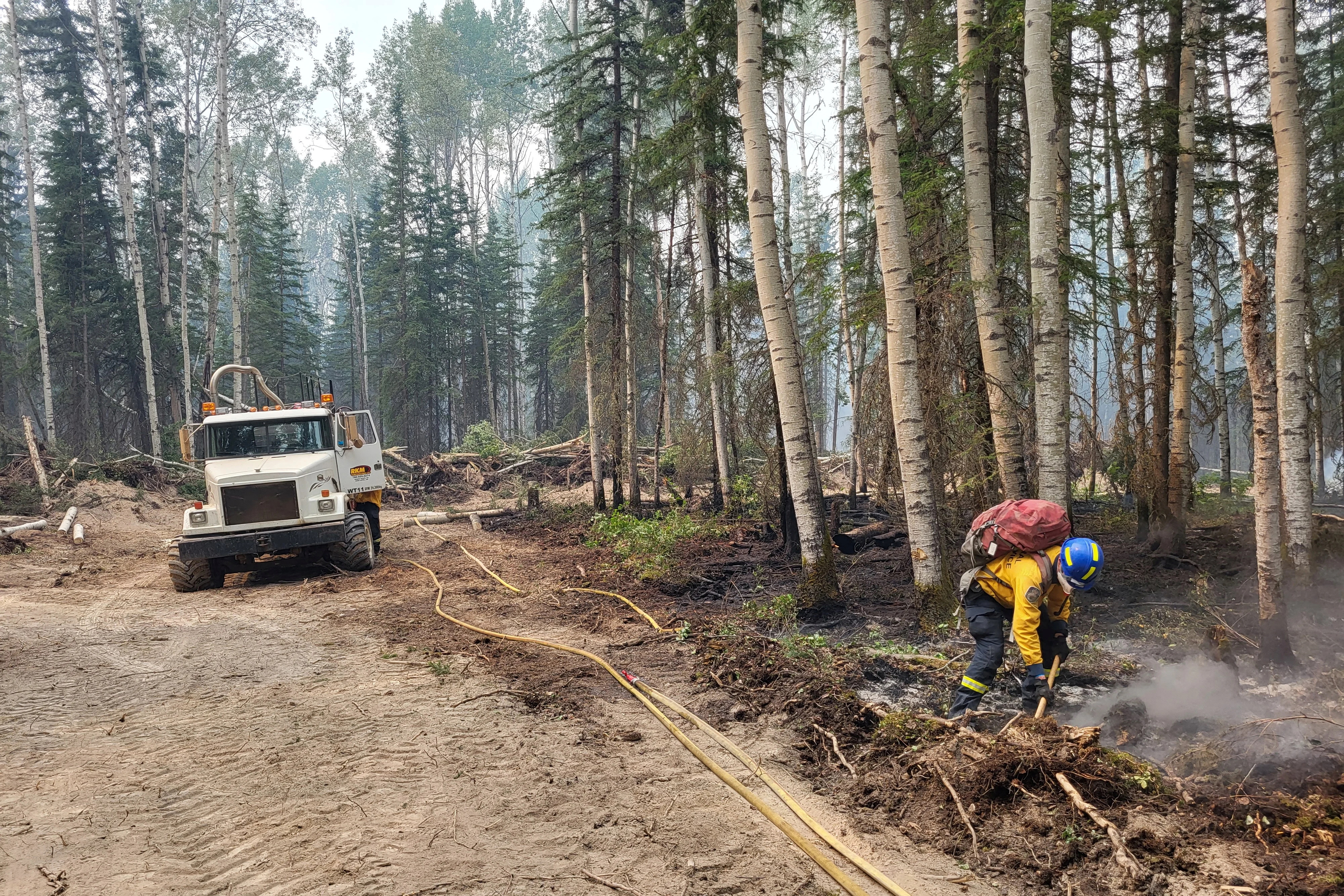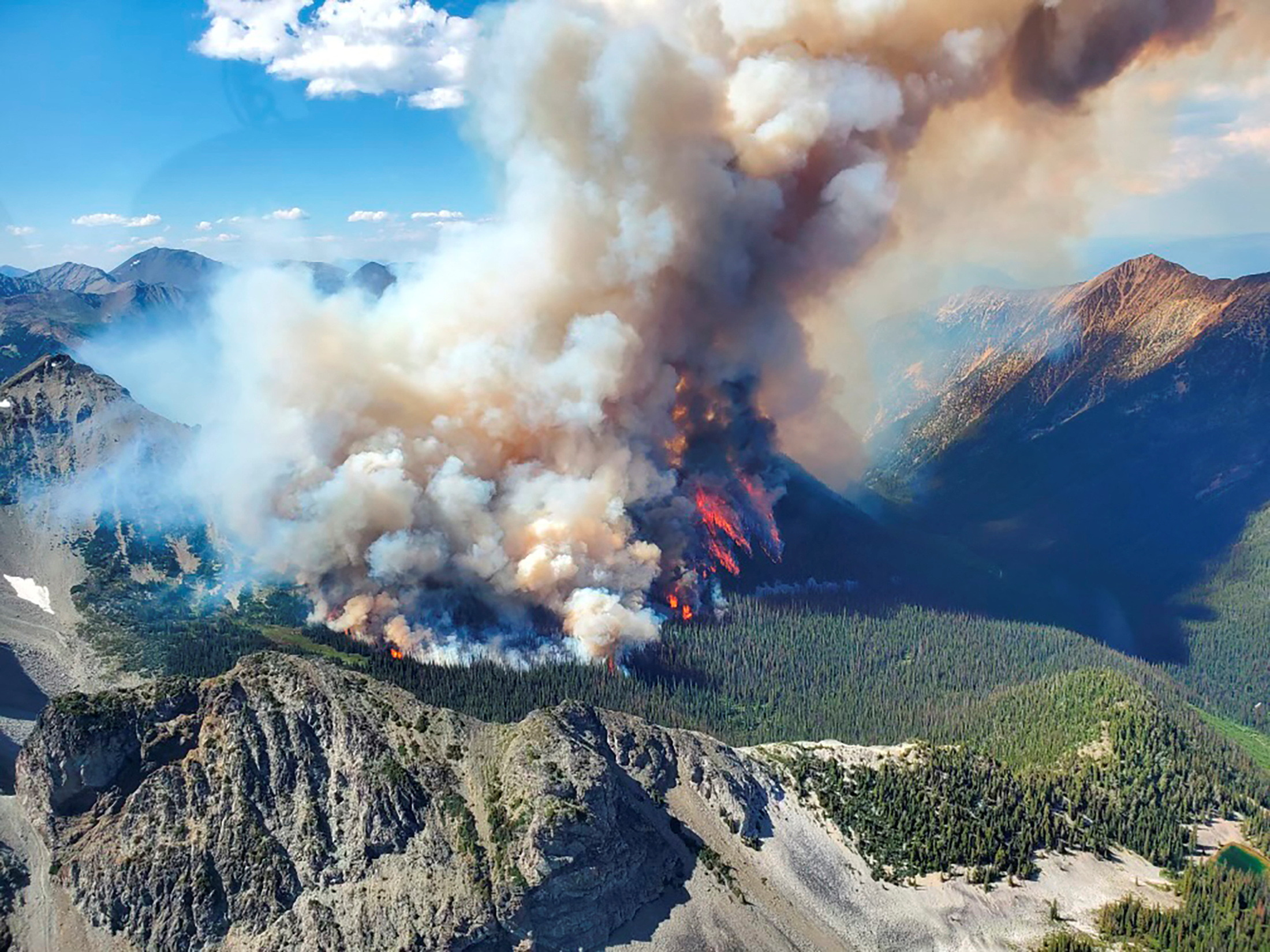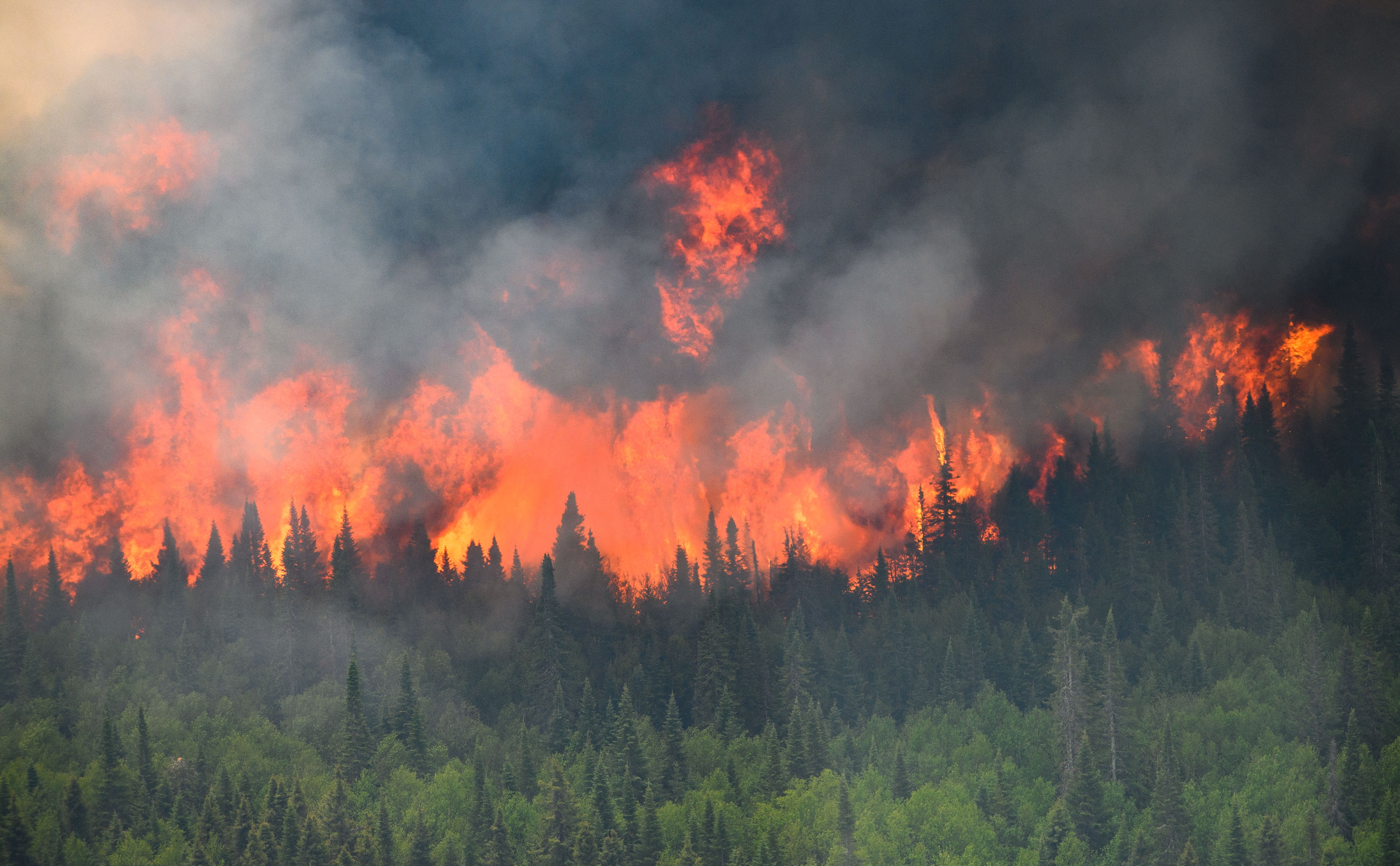
An unprecedented wildfire season continues to rage in Canada, where a second firefighter has died fighting the flames.
Cities across North America are bracing for more smoke on Monday, as 883 active fires burn in Canada, 15 of which only recently sparked. At least 580 of those blazes were considered out of control.
All told, about 10 million hectares (24.7 million acres) have burned in Canada in 2023 so far, surpassing a previous record of approximately 7.1 million hectares (17.5 million acres) in 1995.
Here’s the latest on the Canada fires:
Firefighter killed
Canadian officials have confirmed that a firefighter has died after battling a blaze near his community in the Northwest Territories on Saturday.
“I’m incredibly saddened by the news from the Northwest Territories, that another firefighter has lost their life battling wildfires,” Prime Minister Justin Trudeau tweeted on Sunday.
Officials said the firefighter was from Fort Liard, but his identity was not immediately released. There were 89 active fires in the Northwest Territories on Monday.

Saturday’s death is the second after another firefighter, identified as Devyn Gale, 19, died after a tree fell on her in British Columbia on Thursday. Broken limbs and falling trees pose such high risks to firefighters that they are sometimes referred to by the nickname “widow-makers”.
The Canadian Armed Forces and Canadian Coast Guard have been activated to support firefighting efforts in the country.
South Africa, Australia, the United States, Mexico, New Zealand, France, Spain and Portugal have also deployed resources to help stem the fires.
High temperatures fuel record fire season
British Columbia, on Canada’s west coast, is currently experiencing the most individual fires of any territory, with 373 active blazes on Monday, followed by Quebec on the east coast with 108 fires, according to the Canadian Interagency Forest Fire Centre.
The fires come as Canada is also experiencing record high temperatures.
On July 8, Fort Good Hope in the Northwest Territories reached 17.32 degrees Celsius (63 degrees Fahrenheit), its highest temperature ever recorded.
That came as the world saw record-breaking heat, with scientists saying that 2023 could be shaping up to be the hottest year on record.
High temperatures can dry out vegetation, creating more fuel for fires to burn, according to experts.
Smoke affects US air quality
Smoke from the fires has also affected air quality across Canada and the US, blanketing major cities in the US’s Midwest and Northeast regions starting in June.
On Sunday, the US Environmental Protection Agency (EPA) again posted air quality alerts for states stretching from Montana to Ohio, as the pollution mingles with regional weather patterns.
“Air quality alerts are in place for much of the Great Lakes, Midwest, and northern High Plains,” the US National Weather Service said. “This is due to the lingering thick concentration of Canadian wildfire smoke over these regions.”
New York Governor Kathy Hochul announced air quality alerts would again be issued for northern and western parts of New York state on Monday because of the wildfires.
The EPA’s interactive air quality map on Monday showed patches of “unhealthy” air in Montana, South Dakota, Wyoming, Illinois, Kentucky and Ohio.
Officials recommend that residents, especially those in vulnerable groups, take precautions such as wearing masks, staying indoors and keeping indoor air clean to stay safe.
Is climate change to blame?
Experts have warned that extreme weather caused by climate change will likely make wildfires more devastating.
Climate change is heating up the Arctic, Mohammad Reza Alizadeh, a climate researcher with the Massachusetts Institute of Technology and McGill University in Quebec, told the Chicago Tribune. That, in turn, can shift weather patterns in Canada, one of the eight countries that sit within the Arctic Circle.

Rising temperatures in the Arctic are slowing the jet stream, which is comprised of strong winds in the upper atmosphere. With less movement in the jet stream, droughts can linger in certain areas for longer durations, as can rainfall, Alizadeh said.
That creates a cycle in which heavy rains create more vegetation, creating kindling that can easily burn during extended droughts.
“Climate change is predicted to cause a larger increase in the number of, you know, very hot and dry days across the country,” Alizadeh said.
“And this means our forests are likely to become much more flammable in many regions.”







